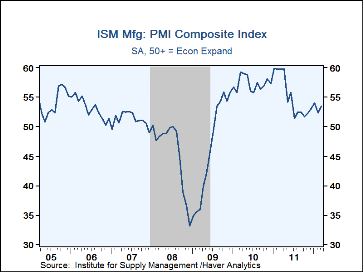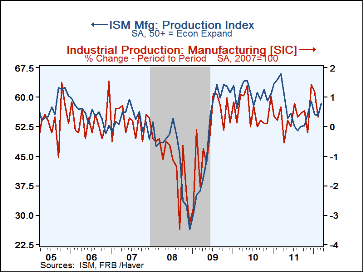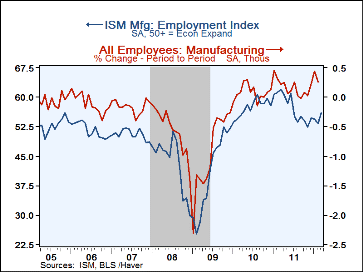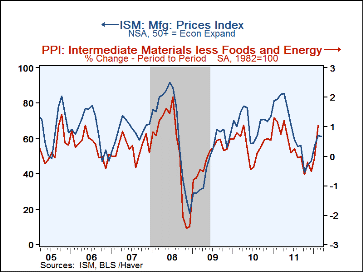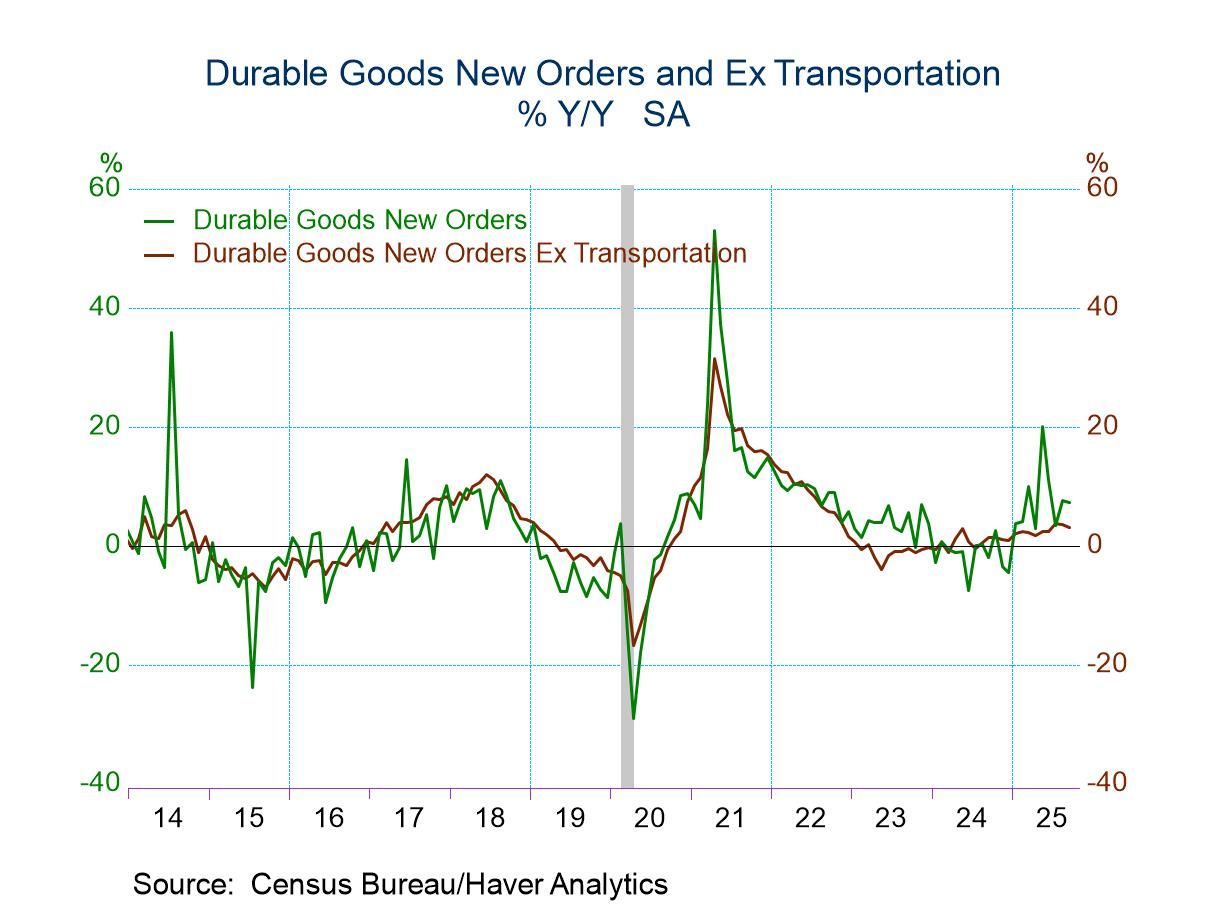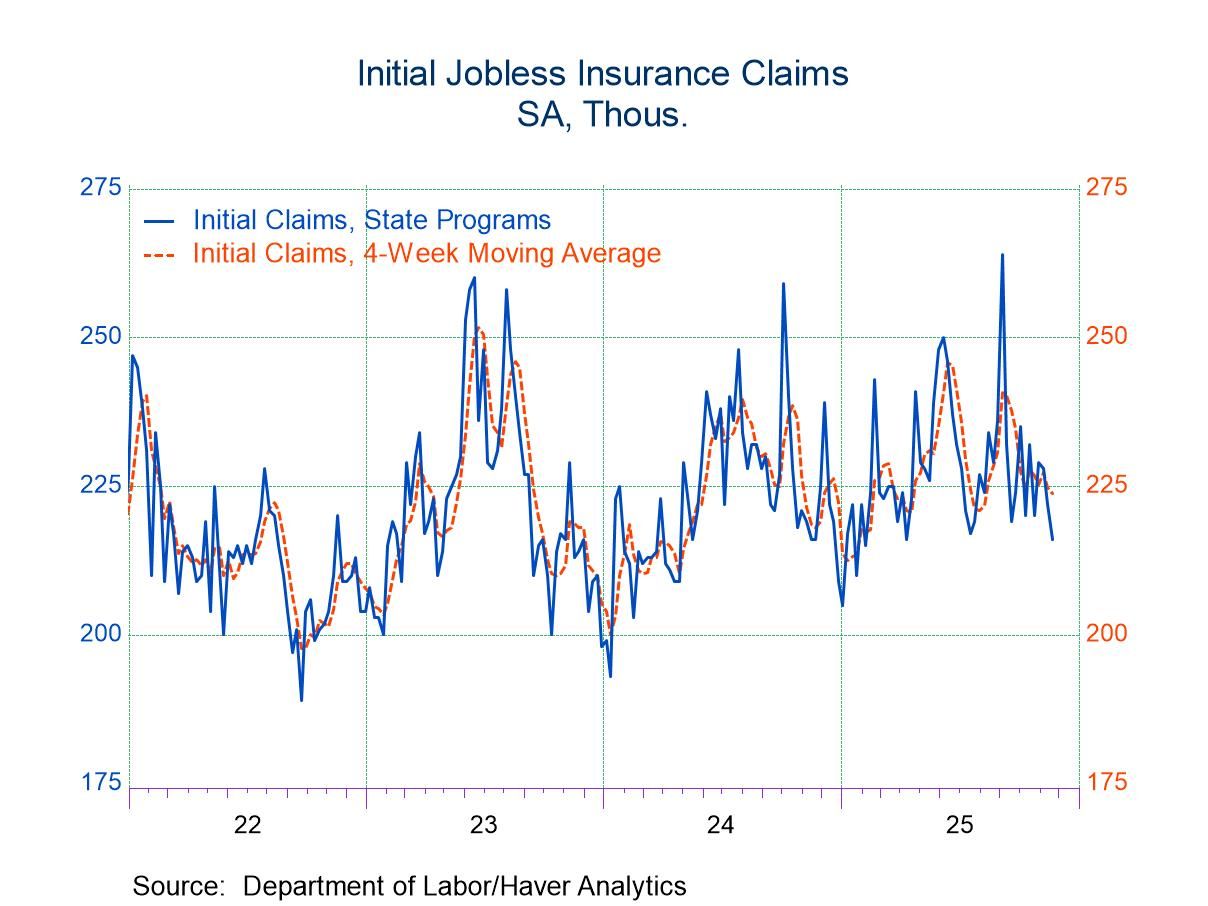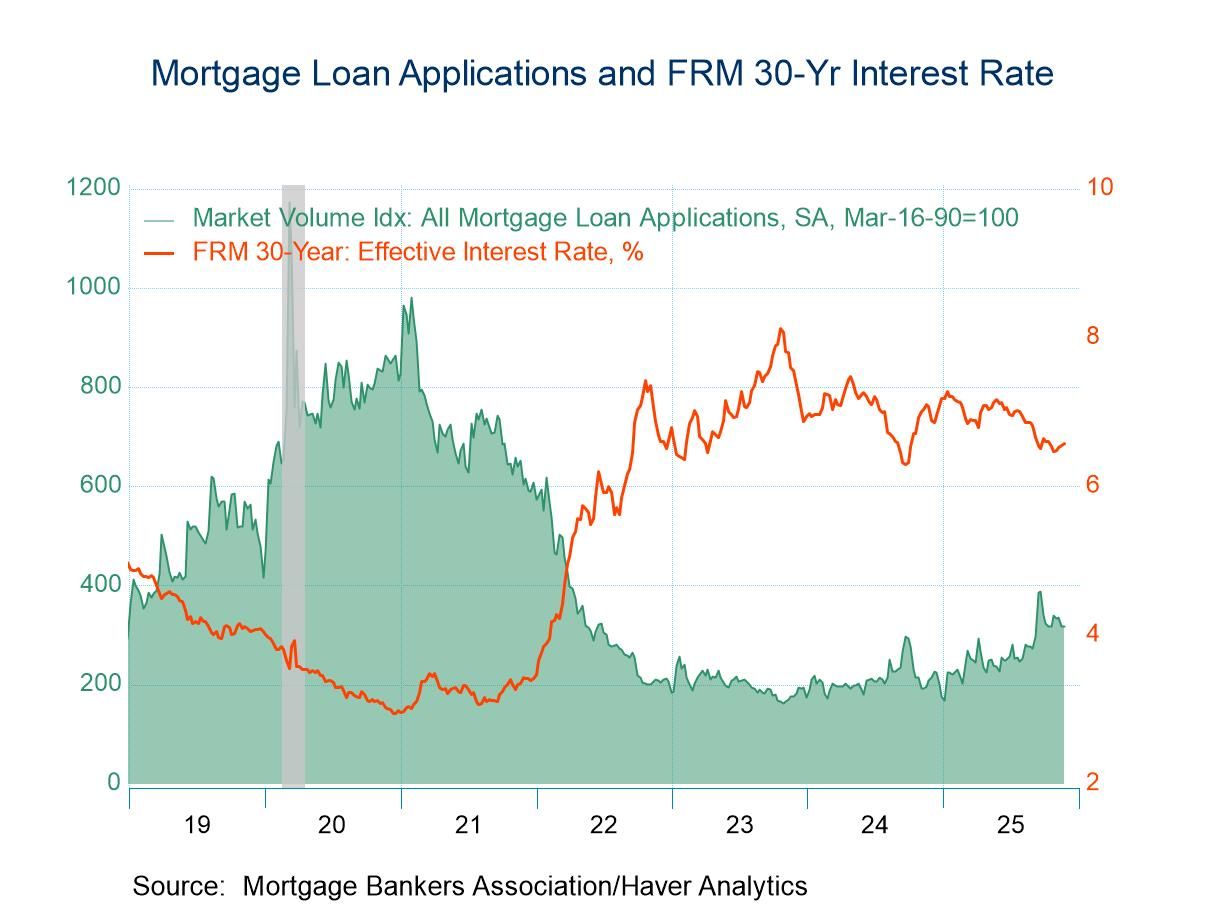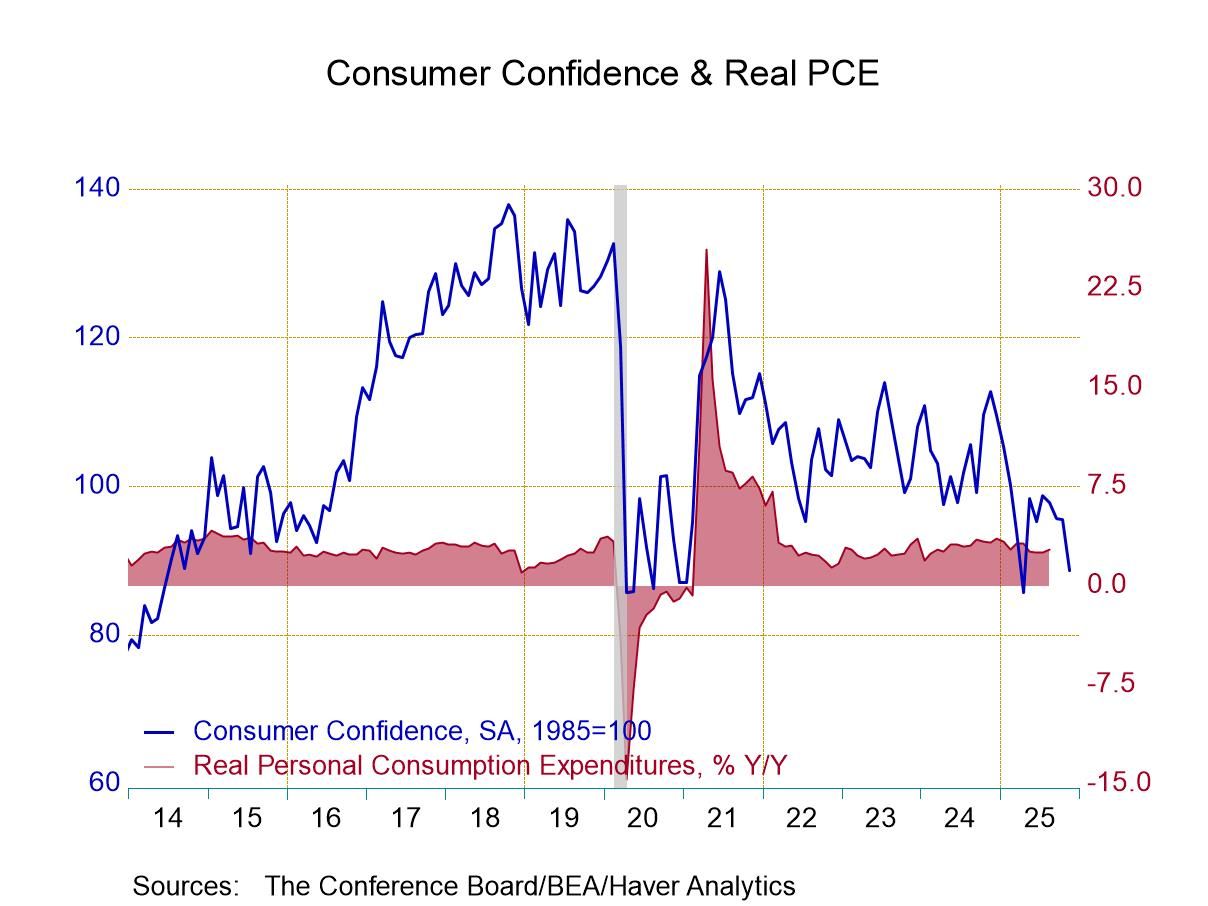 Global| Apr 02 2012
Global| Apr 02 2012U.S. ISM Factory Index Nudges Up But Prices Slip
by:Tom Moeller
|in:Economy in Brief
Summary
Factory sector growth remained just moderate last month. The Composite Index of industrial sector activity from the Institute For Supply Management inched up to an expected 53.4 last month from an unrevised 52.4 in February. The [...]
Factory sector growth remained just moderate last month. The Composite Index of industrial sector activity from the Institute For Supply Management inched up to an expected 53.4 last month from an unrevised 52.4 in February. The figure above the break-even level of 50 continued to indicate an expanding level of overall activity. During the last ten years there has been an 80% correlation between the index level and the three-month change in factory sector production.
Changes in the component indexes were mixed. Moving to the upside were the production, inventories and employment series. During the last ten years there has been an 88% correlation between the employment series level and the m/m change in factory sector payrolls. Declining were the new orders and supplier delivery indexes.
The price index, at 61.0, dipped slightly m/m but for the third consecutive month was above the break-even level of 50. Thirty six percent of firms raised prices, the most since June, while a higher fourteen percent lowered them. During the last ten years there has been an 83% correlation between the index and the m/m change in the core intermediate producer price index.
The separate index of new export orders fell to 54.0 and more-than-reversed its February increase. The imports series dipped slightly to 53.5.
The ISM figures are diffusion indexes and can be found in Haver's USECON database. The expectations data are in the AS1REPNA database.
The Duel Mandate: Has the Fed Changed Its Objective? from the Federal Reserve Bank of St. Louis can be found here.
| ISM Mfg | Mar | Feb | Jan | Mar'11 | 2011 | 2010 | 2009 |
|---|---|---|---|---|---|---|---|
| Composite Index | 53.4 | 52.4 | 54.1 | 59.7 | 55.2 | 57.3 | 46.4 |
| New Orders | 54.5 | 54.9 | 57.6 | 61.9 | 56.4 | 59.2 | 52.0 |
| Production | 58.3 | 55.3 | 55.7 | 65.9 | 57.4 | 61.0 | 50.8 |
| Employment | 56.1 | 53.2 | 54.3 | 62.1 | 57.4 | 57.3 | 40.7 |
| Supplier Deliveries | 48.0 | 49.0 | 53.6 | 59.8 | 54.7 | 58.1 | 51.6 |
| Inventories | 50.0 | 49.5 | 49.5 | 49.0 | 50.1 | 50.8 | 37.1 |
| Prices Paid Index (NSA) | 61.0 | 61.5 | 55.5 | 85.0 | 65.2 | 68.9 | 48.3 |
Tom Moeller
AuthorMore in Author Profile »Prior to joining Haver Analytics in 2000, Mr. Moeller worked as the Economist at Chancellor Capital Management from 1985 to 1999. There, he developed comprehensive economic forecasts and interpreted economic data for equity and fixed income portfolio managers. Also at Chancellor, Mr. Moeller worked as an equity analyst and was responsible for researching and rating companies in the economically sensitive automobile and housing industries for investment in Chancellor’s equity portfolio. Prior to joining Chancellor, Mr. Moeller was an Economist at Citibank from 1979 to 1984. He also analyzed pricing behavior in the metals industry for the Council on Wage and Price Stability in Washington, D.C. In 1999, Mr. Moeller received the award for most accurate forecast from the Forecasters' Club of New York. From 1990 to 1992 he was President of the New York Association for Business Economists. Mr. Moeller earned an M.B.A. in Finance from Fordham University, where he graduated in 1987. He holds a Bachelor of Arts in Economics from George Washington University.


